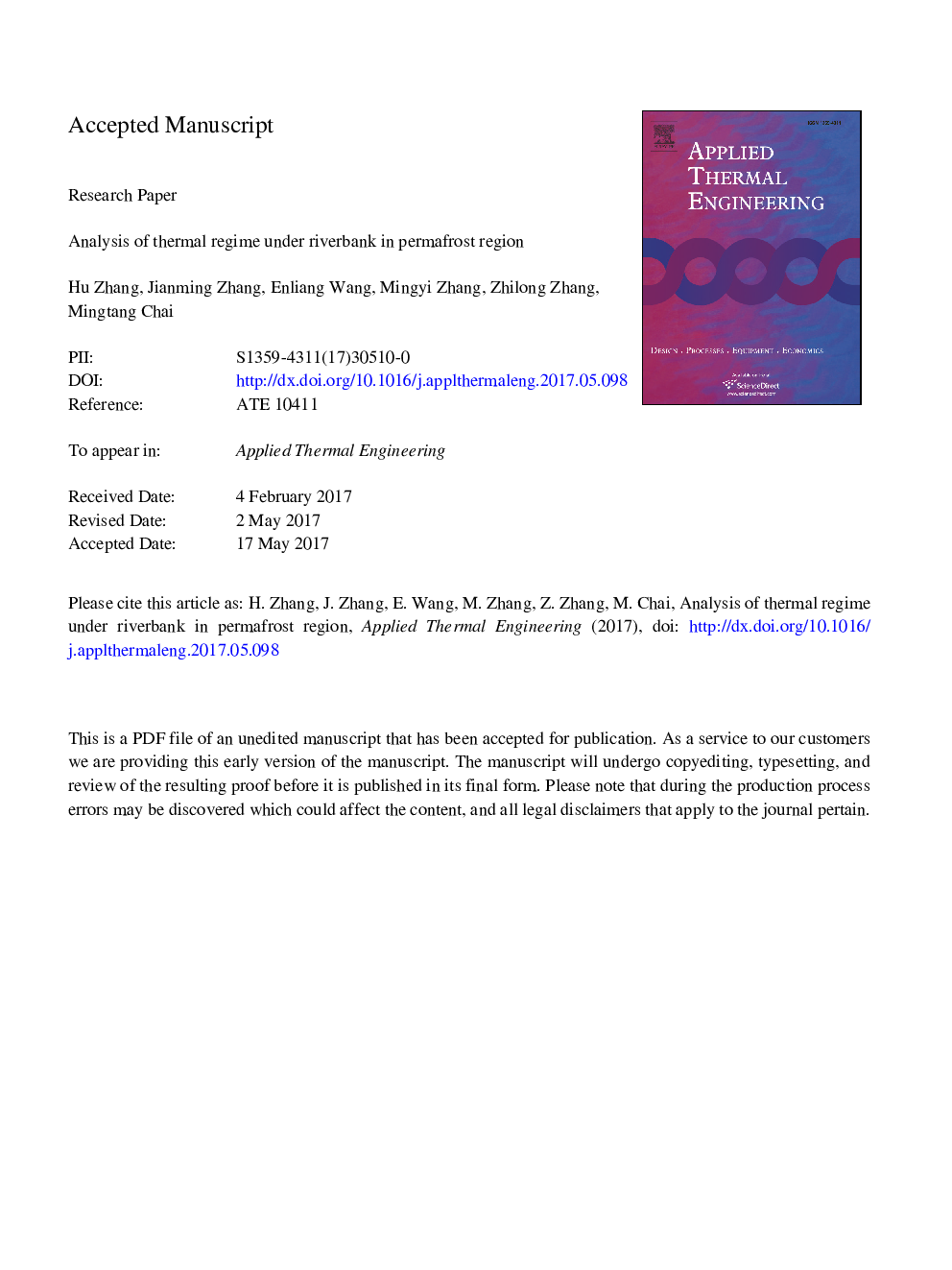| Article ID | Journal | Published Year | Pages | File Type |
|---|---|---|---|---|
| 4990573 | Applied Thermal Engineering | 2017 | 34 Pages |
Abstract
A riverbank was constructed on ice-rich permafrost in the far north of China in 2015, and its performance is closely related to the thermal stability of the permafrost foundation. To investigate the thermal regime evolution of the foundation, a numerical simulation using a coupled hydro-thermal model that involves concrete hydration, heat transfer by conduction and convection is performed over 20Â years in this paper. The monitored ground temperatures help confirm the accuracy of the simulation. A dramatic thaw penetration in the permafrost foundation is anticipated in the future under current geological and structural conditions. Moreover, this paper highlights the importance of concrete hydration, backfilled soil temperature, seepage and the mean annual ground temperature in effecting the geothermal evolution. These discussions suggest a requirement for some measures in construction and maintenance of hydraulic structures over permafrost.
Related Topics
Physical Sciences and Engineering
Chemical Engineering
Fluid Flow and Transfer Processes
Authors
Hu Zhang, Jianming Zhang, Enliang Wang, Mingyi Zhang, Zhilong Zhang, Mingtang Chai,
